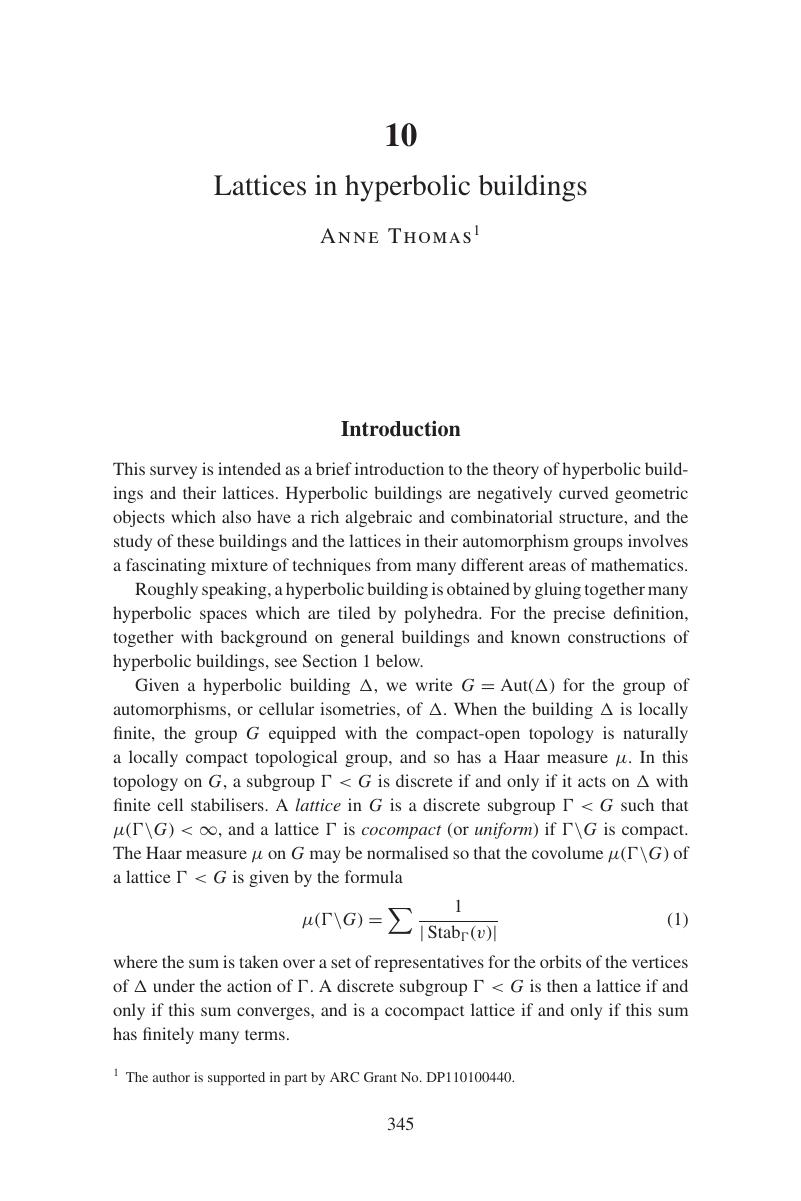Book contents
- Frontmatter
- Contents
- List of contributors
- Preface
- 1 Gap distributions and homogeneous dynamics
- 2 Topology of open nonpositively curved manifolds
- 3 Cohomologie et actions isométriques propres sur les espaces Lp
- 4 Compact Clifford–Klein Forms – Geometry, Topology and Dynamics
- 5 A survey on noncompact harmonic and asymptotically harmonic manifolds
- 6 The Atiyah conjecture
- 7 Cannon-Thurston Maps for Surface Groups: An Exposition of Amalgamation Geometry and Split Geometry
- 8 Counting visible circles on the sphere and Kleinian groups
- 9 Counting arcs in negative curvature
- 10 Lattices in hyperbolic buildings
- References
10 - Lattices in hyperbolic buildings
Published online by Cambridge University Press: 05 January 2016
- Frontmatter
- Contents
- List of contributors
- Preface
- 1 Gap distributions and homogeneous dynamics
- 2 Topology of open nonpositively curved manifolds
- 3 Cohomologie et actions isométriques propres sur les espaces Lp
- 4 Compact Clifford–Klein Forms – Geometry, Topology and Dynamics
- 5 A survey on noncompact harmonic and asymptotically harmonic manifolds
- 6 The Atiyah conjecture
- 7 Cannon-Thurston Maps for Surface Groups: An Exposition of Amalgamation Geometry and Split Geometry
- 8 Counting visible circles on the sphere and Kleinian groups
- 9 Counting arcs in negative curvature
- 10 Lattices in hyperbolic buildings
- References
Summary

- Type
- Chapter
- Information
- Geometry, Topology, and Dynamics in Negative Curvature , pp. 345 - 363Publisher: Cambridge University PressPrint publication year: 2016
References
- 1
- Cited by



